
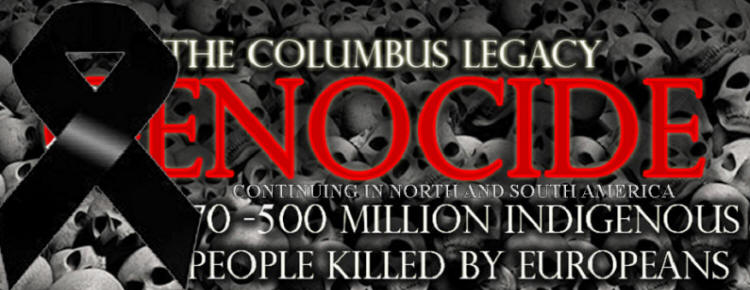
Thanksgiving is a Day of Mourning for Native Americans by John Robles
Article From January 2012
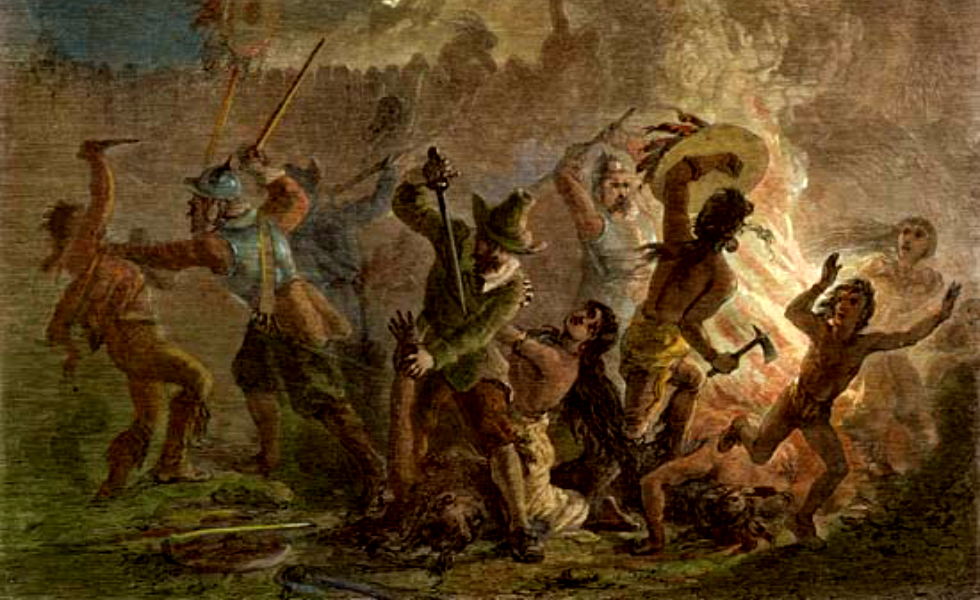
11-22-2012
http://www.geopolitika.rs/index.php/sr/intervju/566-2013-07-16-07-10-17
http://www.jar2.com/Videos/YouTubeSave/Thanksgiving%20U.S.%20List%20of%20Shame.mp4
http://www.jar2.com/Videos/YouTubeSave/The_Boiling_Point.mp4
http://www.jar2.com/Videos/YouTubeSave/Thanksgiving.mp4
http://www.jar2.com/Topics/Indigenous.html
Had the Nazis won the Great Patriotic War and succeeded in exterminating the poor Jews who refused to go to Palestine and the “mud people”, as they are called in Mein Kampf, and achieved their dream of a great Aryan city where the “mud people” were paraded in front of their Aryan masters every day to pay tribute (also detailed in Mein Kampf), and then after the passing of time had created a holiday commemorating their friendship with the Jews and the “mud people” they had exterminated, you would have an analogous celebration to the American “holiday” of Thanksgiving.
The same can be said for Russians if the Russians celebrated the genocide of over 100 million Russians during the era of the Great Patriotic war.
As a Taino Indian, a subgroup of the Arawak Nation, I feel it my responsibility to inform people as to the real meaning of this “holiday”. My people were also exterminated as were our northern brothers, as were our western and southern brothers. For many Indians this day is the same as if the Jews celebrated the holocaust.
In the US Thanksgiving is a day when people feast on turkey, cranberry sauce, stuffing, yams (or sweet potatoes) and many other things. For most common Americans who believe the official version of the origins of the holiday it is a day of friendship between the Native Americans and the white “Pilgrims” as they called themselves. It is a day when families get together and spend the entire day eating and gorging themselves on the many beautiful foods that are native only to North America. However the true history of Thanksgiving is much blacker and bloodier and is only remembered by Native Americans and very few others.
The American Indians of today are a marginalized section of American society, who are kept isolated and with little communication or contact with the outside world. They are hidden away like skeletons in the closet of American society, a country founded a little over 200 years ago, on the genocide of the Indian people and developed and founded on their blood and by the labor of black slaves.
Imagine if you will for a moment that Hitler had won World War II, unthinkable, but for the sake of argument picture that for a minute. The Nazis were responsible for the killing of, what may have been up to 40 million Russian and Soviet citizens, as records were sometimes impossible to keep at that time the exact number will never be known. Now imagine they had won and in 200 years we celebrated a day when the Nazis forced the Russians to bring them food, killed one of their leaders and raped their women and children, unthinkable again, but for the American Indians that is exactly what Thanksgiving is.
At the time written records were not kept, the Indians passed along their history by word of mouth, in the retelling of stories, or by other less dependable and primitive means or record keeping. They were by European standards, more primitive but they were also a peaceful and open people who time and again trusted the drunken outcasts, murderers, thieves, rapists and psychopaths of British and European society, who were in reality the true founders of the United States.
The records that were kept were mostly lost, and for good reason, but what is available paints a very different picture than what the US Government, founded by these same outcasts, would have us believe.
During the period when the “Thanksgiving “feast was to have occurred, the Europeans invaders were in the middle of one of the bloodiest campaigns of genocide that signaled the founding of the US.
The atrocities meted out on the Indians reached legendary proportions, with killings, rape and mutilations being the norm, and as one story goes the Indians were invited to the feast in order for the whites to be able to kill one of the Indian chiefs, Wituwamat, who was wanted by Miles Standish and who was later beheaded and whose head was displayed on a stake in Plymouth for several years. According to historian Gary B. Nash, it was “a symbol of white power”. Standish had the Indian chief’s young brother hanged for good measure as well.
From that time on, the whites were known to the Indians of Massachusetts by the name "Wotowquenange," which in their tongue meant cutthroats and stabbers."Wotowquenange," which in their tongue meant cutthroats and stabbers. Massachusetts was where the supposed feast took place.
Until around 1970, the 350th anniversary of the landing of the Pilgrims, the official history of Thanksgiving was rarely challenged, having been founded in 1863 by Abraham Lincoln, the fairy tale existed in the American imagination untouched by facts for more than a hundred years.
In 1970, when the president of the Federated Indian League, Frank B. James, prepared a speech which exposed some of the crimes committed by the Pilgrims, including robbing the graves of the Wampanoags, he was not allowed to give it.
Instead, Massachusetts officials offered him another watered down speech in keeping with the official story. Thousand of Indians protested and starting in 1970 Thanksgiving became a National Day of Mourning for the American Indian people. Frank B. James’ speech began like this: "We welcomed you, the white man, with open arms, little knowing that it was the beginning of the end; that before 50 years were to pass, the Wampanoag would no longer be a free people."
Massachusetts officials of course refused to allow such a speech to be given, and although the officials wanted him to speak Frank James refused. On Thanksgiving Day 1970, hundreds of Indians from around the country came to protest, marking the first National Day of Mourning, a day to mark the genocide of Native Americans, who were being exterminated as the early settlers prospered. The true story of "Thanksgiving" is what whites did not want Mr. James to tell.
Another chief wanted by Standish was Metacomet Captain Benjamin Church tracked down and murdered Metacomet in 1676, his body was quartered and parts were "left for the wolves." The great Indian chief's hands were cut off and sent to Boston and his head went to Plymouth, where it was set upon a pole on the real first "day of public Thanksgiving for the beginning of revenge upon the enemy."
Metacomet's nine-year-old son was destined for execution because, the whites reasoned, the offspring of the devil must pay for the sins of their father. The child was instead shipped to the Caribbean to spend his life in slavery.
Thanksgiving is in fact a holiday that celebrates the fact the Indians were so easy to kill and conquer and that their lands were so easy to take. The Pilgrims were thankful to God for this and for that reason alone it was made an official holiday.
In memory of the exterminated Indian peoples and nations of the Americas, against whom genocide was carried out, whose lands were stolen and whose descendants like myself have suffered persecution and been marginalized at the hands of the US government and the ancestors of psychopaths, I am fasting today, and praying for the souls of a once proud and beautiful people, forgotten by history, whose souls still scream for justice. The original published by the Voice of Russia
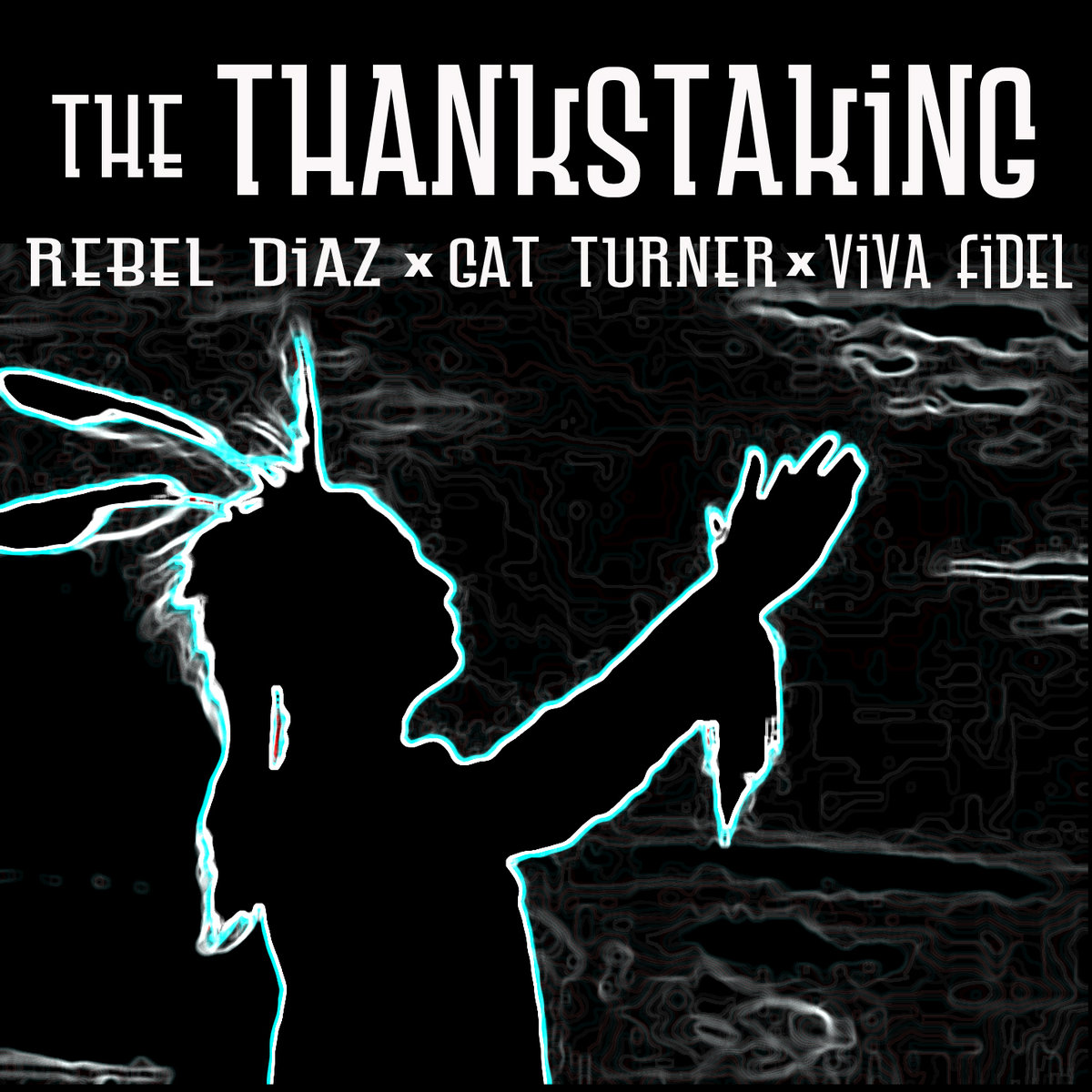
Thanksgiving is a Day of Mourning
11-26-2009
The Pilgrims of Plymouth, The Original Scalpers
Contrary to popular mythology the Pilgrims were no friends to the local Indians. They were engaged in a ruthless war of extermination against their hosts, even as they falsely posed as friends.
Just days before the alleged Thanksgiving love-fest, a company of Pilgrims led by Myles Standish actively sought to chop off the head of a local chief. They deliberately caused a rivalry between two friendly Indians, pitting one against the other in an attempt to obtain "better intelligence and make them both more diligent."
An 11-foot-high wall was erected around the entire settlement for the purpose of keeping the Indians out. Any Indian who came within the vicinity of the Pilgrim settlement was subject to robbery, enslavement, or even murder.
The Pilgrims further advertised their evil intentions and white racial hostility, when they mounted five cannons on a hill around their settlement, constructed a platform for artillery, and then organized their soldiers into four companies-all in preparation for the military destruction of their friends the Indians.
Pilgrim Myles Standish eventually got his bloody prize. He went to the Indians, pretended to be a trader, then beheaded an Indian man named Wituwamat. He brought the head to Plymouth, where it was displayed on a wooden spike for many years, according to Gary B. Nash, "as a symbol of white power."
Standish had the Indian man's young brother hanged from the rafters for good measure.
From that time on, the whites were known to the Indians of Massachusetts by the name "Wotowquenange," which in their tongue meant cutthroats and stabbers.
The Real Thanskgiving
Quoted from: The Hidden History of Massachusetts
Much of America's understanding of the early
relationship between the Indian and the European is conveyed through the
story of Thanksgiving. Proclaimed a holiday in 1863 by Abraham Lincoln, this
fairy tale of a feast was allowed to exist in the American imagination
pretty much untouched until 1970, the 350th anniversary of the landing of
the Pilgrims. That is when Frank B. James, president of the Federated
Eastern Indian League, prepared a speech for a Plymouth banquet that exposed
the Pilgrims for having committed, among other crimes, the robbery of the
graves of the Wampanoags. He wrote:
"We welcomed you, the white man, with open arms,
little knowing that it was the beginning of the end; that before 50 years
were to pass, the Wampanoag would no longer be a free people."
But white Massachusetts officials told him he
could not deliver such a speech and offered to write him another. Instead,
James declined to speak, and on Thanksgiving Day hundreds of Indians from
around the country came to protest. It was the first National Day of
Mourning, a day to mark the losses Native Americans suffered as the early
settlers prospered. This true story of "Thanksgiving" is what whites did not
want Mr. James to tell.
What Really Happened in Plymouth in 1621?
According to a single-paragraph account in the
writings of one Pilgrim, a harvest feast did take place in Plymouth in 1621,
probably in mid-October, but the Indians who attended were not even invited.
Though it later became known as "Thanksgiving," the Pilgrims never called it
that. And amidst the imagery of a picnic of interracial harmony is some of
the most terrifying bloodshed in New World history.
The Pilgrim crop had failed miserably that year,
but the agricultural expertise of the Indians had produced twenty acres of
corn, without which the Pilgrims would have surely perished. The Indians
often brought food to the Pilgrims, who came from England ridiculously
unprepared to survive and hence relied almost exclusively on handouts from
the overly generous Indians-thus making the Pilgrims the western
hemisphere's first class of welfare recipients. The Pilgrims invited the
Indian sachem Massasoit to their feast, and it was Massasoit, engaging in
the tribal tradition of equal sharing, who then invited ninety or more of
his Indian brothers and sisters-to the annoyance of the 50 or so ungrateful
Europeans. No turkey, cranberry sauce or pumpkin pie was served; they likely
ate duck or geese and the venison from the 5 deer brought by Massasoit. In
fact, most, if notall, of the food was most likely brought and prepared by
the Indians, whose 10,000-year familiarity with the cuisine of the region
had kept the whites alive up to that point.
The Pilgrims wore no black hats or buckled
shoes-these were the silly inventions of artists hundreds of years since
that time. These lower-class Englishmen wore brightly colored clothing, with
one of their church leaders recording among his possessions "1 paire of
greene drawers." Contrary to the fabricated lore of storytellers generations
since, no Pilgrims prayed at the meal, and the supposed good cheer and
fellowship must have dissipated quickly once the Pilgrims brandished their
weaponry in a primitive display of intimidation. What's more, the Pilgrims
consumed a good deal of home brew. In fact, each Pilgrim drank at least a
half gallon of beer a day, which they preferred even to water. This daily
inebriation led their governor, William Bradford, to comment on his people's
"notorious sin," which included their "drunkenness and uncleanliness" and
rampant "sodomy"...
The Pilgrims of Plymouth, The Original Scalpers
Contrary to popular mythology the Pilgrims were
no friends to the local Indians. They were engaged in a ruthless war of
extermination against their hosts, even as they falsely posed as friends.
Just days before the alleged Thanksgiving love-fest, a company of Pilgrims
led by Myles Standish actively sought to chop off the head of a local chief.
They deliberately caused a rivalry between two friendly Indians, pitting one
against the other in an attempt to obtain "better intelligence and make them
both more diligent." An 11-foot-high wall was erected around the entire
settlement for the purpose of keeping the Indians out.
Any Indian who came within the vicinity of the
Pilgrim settlement was subject to robbery, enslavement, or even murder. The
Pilgrims further advertised their evil intentions and white racial
hostility, when they mounted five cannons on a hill around their settlement,
constructed a platform for artillery, and then organized their soldiers into
four companies-all in preparation for the military destruction of their
friends the Indians.
Pilgrim Myles Standish eventually got his bloody
prize. He went to the Indians, pretended to be a trader, then beheaded an
Indian man named Wituwamat. He brought the head to Plymouth, where it was
displayed on a wooden spike for many years, according to Gary B. Nash, "as a
symbol of white power." Standish had the Indian man's young brother hanged
from the rafters for good measure. From that time on, the whites were known
to the Indians of Massachusetts by the name "Wotowquenange," which in their
tongue meant cutthroats and stabbers.
Who Were the "Savages"?
The myth of the fierce, ruthless Indian savage
lusting after the blood of innocent Europeans must be vigorously dispelled
at this point. In actuality, the historical record shows that the very
opposite was true.
Once the European settlements stabilized, the
whites turned on their hosts in a brutal way. The once amicable relationship
was breeched again and again by the whites, who lusted over the riches of
Indian land. A combination of the Pilgrims' demonization of the Indians, the
concocted mythology of Eurocentric historians, and standard Hollywood
propaganda has served to paint the gentle Indian as a tomahawk-swinging
savage endlessly on the warpath, lusting for the blood of the God-fearing
whites.
But the Pilgrims' own testimony obliterates that
fallacy. The Indians engaged each other in military contests from time to
time, but the causes of "war," the methods, and the resulting damage
differed profoundly from the European variety:
o A major Indian "war" might end with less than a
dozen casualties on both sides. Often, when the arrows had been expended the
"war" would be halted. The European practice of wiping out whole nations in
bloody massacres was incomprehensible to the Indian.
According to one scholar, "The most notable
feature of Indian warfare was its relative innocuity." European observers of
Indian wars often expressed surprise at how little harm they actually
inflicted. "Their wars are far less bloody and devouring than the cruel wars
of Europe," commented settler Roger Williams in 1643. Even Puritan warmonger
and professional soldier Capt. John Mason scoffed at Indian warfare:
"[Their] feeble manner...did hardly deserve the name of fighting." Fellow
warmonger John Underhill spoke of the Narragansetts, after having spent a
day "burning and spoiling" their country: "no Indians would come near us,
but run from us, as the deer from the dogs." He concluded that the Indians
might fight seven years and not kill seven men. Their fighting style, he
wrote, "is more for pastime, than to conquer and subdue enemies."
All this describes a
people for whom war is a deeply regrettable last resort. An agrarian people,
the American Indians had devised a civilization that provided dozens of
options all designed to avoid conflict--the very opposite of Europeans, for
whom all-out war, a ferocious bloodlust, and systematic genocide are their
apparent life force. Thomas Jefferson--who himself advocated the physical
extermination of the American Indian--said of Europe, "They [Europeans] are
nations of eternal war. All their energies are expended in the destruction
of labor, property and lives of their people."
Puritan Holocaust
By the mid 1630s, a new group of 700 even holier
Europeans calling themselves Puritans had arrived on 11 ships and settled in
Boston-which only served to accelerate the brutality against the Indians.
In one incident around 1637, a force of whites
trapped some seven hundred Pequot Indians, mostly women, children, and the
elderly, near the mouth of the Mystic River. Englishman John Mason attacked
the Indian camp with "fire, sword, blunderbuss, and tomahawk." Only a
handful escaped and few prisoners were taken-to the apparent delight of the
Europeans:
To see them frying in the fire, and the streams of their blood quenching the same, and the stench was horrible; but the victory seemed a sweet sacrifice, and they gave praise thereof to God.
This event marked the first actual Thanksgiving. In
just 10 years 12,000 whites had invaded New England, and as their numbers
grew they pressed for all-out extermination of the Indian. Euro-diseases had
reduced the population of the Massachusetts nation from over 24,000 to less
than 750; meanwhile, the number of European settlers in Massachusetts rose
to more than 20,000 by 1646.
By 1675, the Massachusetts Englishmen were in a
full-scale war with the great Indian chief of the Wampanoags, Metacomet.
Renamed "King Philip" by the white man, Metacomet watched the steady erosion
of the lifestyle and culture of his people as European-imposed laws and
values engulfed them.
In 1671, the white man had ordered Metacomet to come
to Plymouth to enforce upon him a new treaty, which included the humiliating
rule that he could no longer sell his own land without prior approval from
whites. They also demanded that he turn in his community's firearms. Marked
for extermination by the merciless power of a distant king and his ruthless
subjects, Metacomet retaliated in 1675 with raids on several isolated
frontier towns. Eventually, the Indians attacked 52 of the 90 New England
towns, destroying 13 of them. The Englishmen ultimately regrouped, and after
much bloodletting defeated the great Indian nation, just half a century
after their arrival on Massachusetts soil. Historian Douglas Edward Leach
describes the bitter end:
The ruthless executions, the cruel sentences...were
all aimed at the same goal-unchallengeable white supremacy in southern New
England. That the program succeeded is convincingly demonstrated by the
almost complete docility of the local native ever since.
When Captain Benjamin Church tracked down and
murdered Metacomet in 1676, his body was quartered and parts were "left for
the wolves." The great Indian chief's hands were cut off and sent to Boston
and his head went to Plymouth, where it was set upon a pole on the real
first "day of public Thanksgiving for the beginning of revenge upon the
enemy." Metacomet's nine-year-old son was destined for execution because,
the whites reasoned, the offspring of the devil must pay for the sins of
their father. The child was instead shipped to the Caribbean to spend his
life in slavery.
As the Holocaust continued, several official
Thanksgiving Days were proclaimed. Governor Joseph Dudley declared in 1704 a
"General Thanksgiving"-not in celebration of the brotherhood of man-but for
[God's] infinite Goodness to extend His Favors...In defeating and
disappointing... the Expeditions of the Enemy [Indians] against us, And the
good Success given us against them, by delivering so many of them into our
hands...
Just two years later one could reap a ££50 reward in
Massachusetts for the scalp of an Indian-demonstrating that the practice of
scalping was a European tradition. According to one scholar, "Hunting
redskins became...a popular sport in New England, especially since prisoners
were worth good money..."
References in The Hidden History of Massachusetts: A Guide for Black Folks ©© DR. TINGBA APIDTA, ; ISBN 0-9714462-0-2
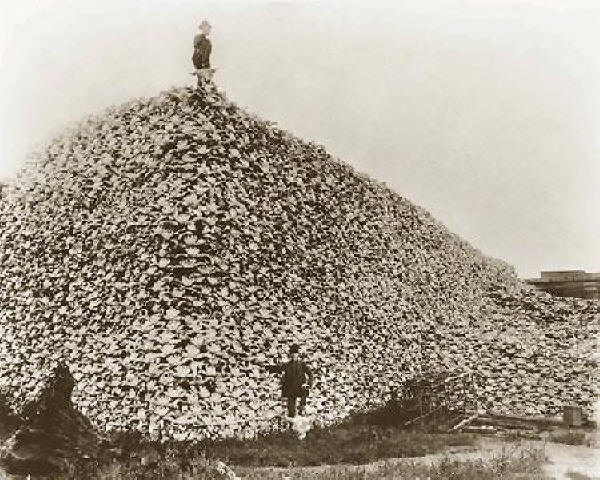
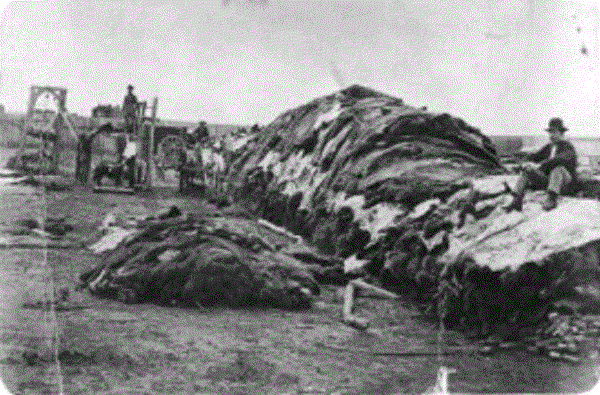
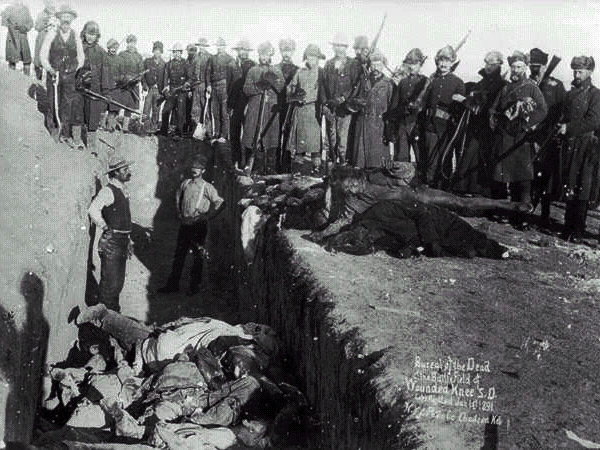
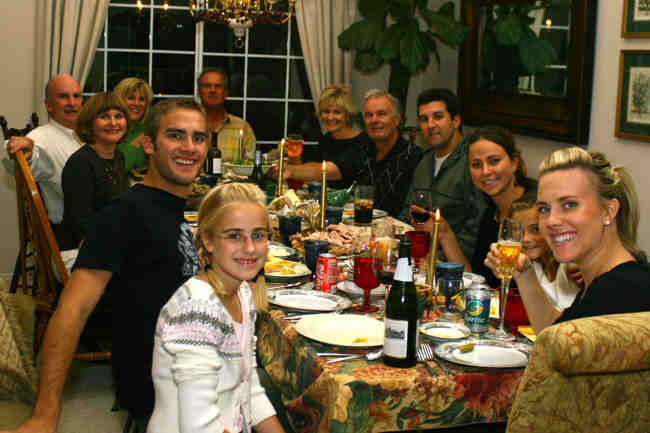
Europeans who call themselves Americans celebrating genocide and the real Americans being starved to death.
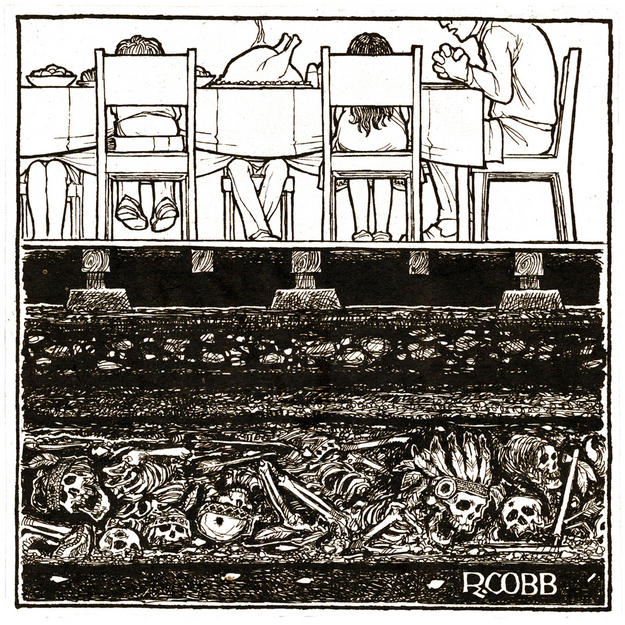


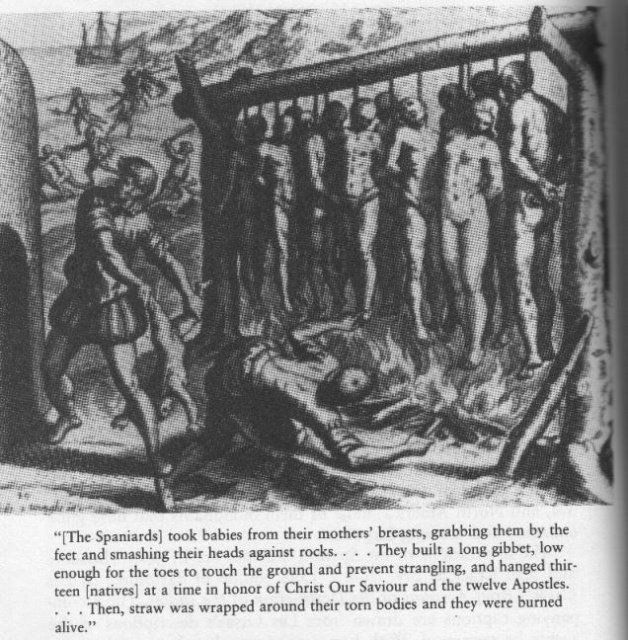
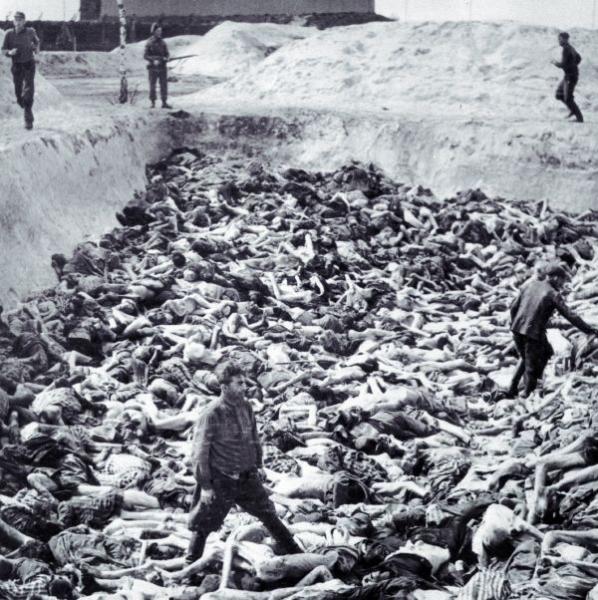
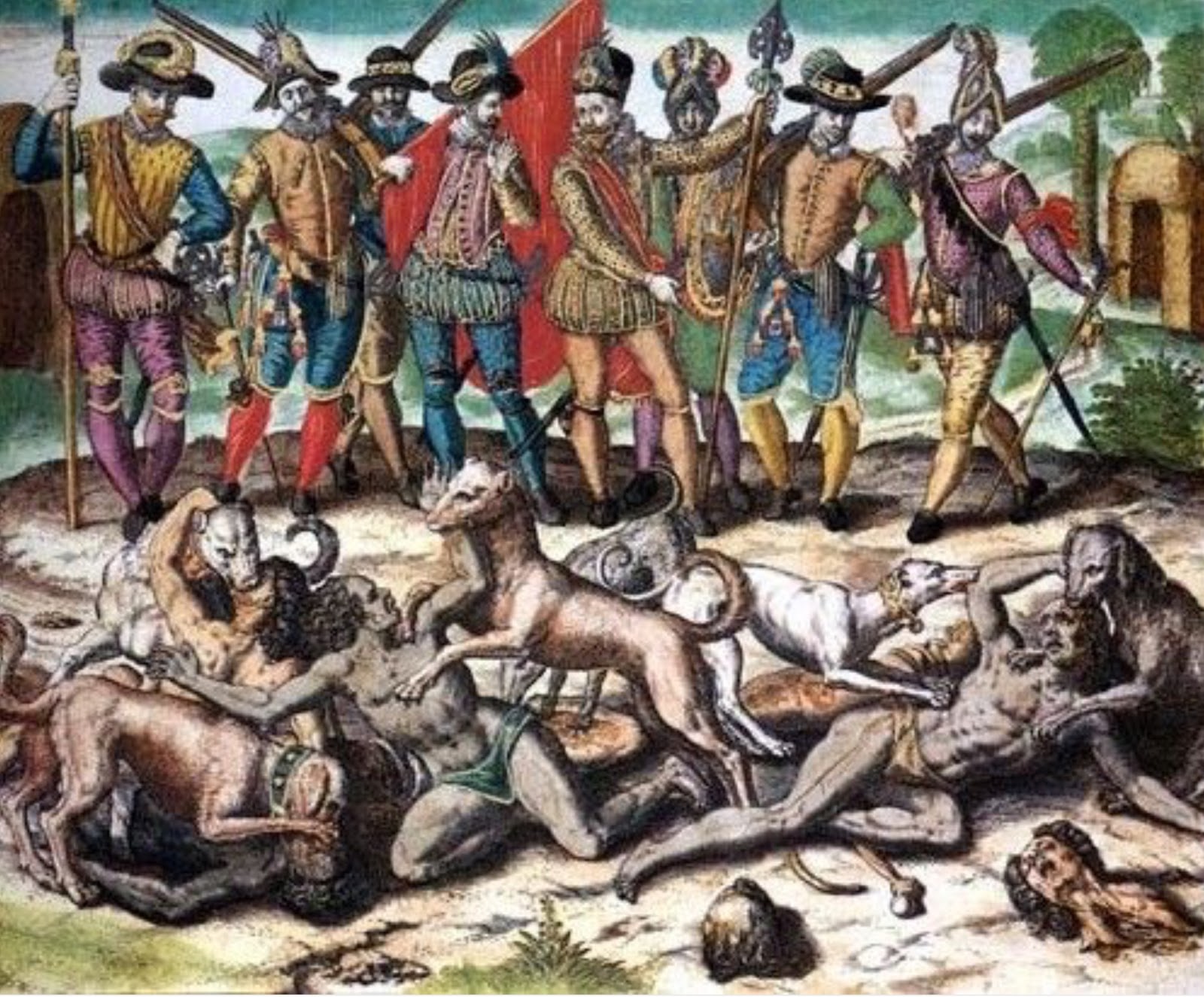
THANKSGIVING !?!?
TODAY IS A DAY OF MOURNING FOR NATIVE AMERICANS AND INDIGENOUS PEOPLE